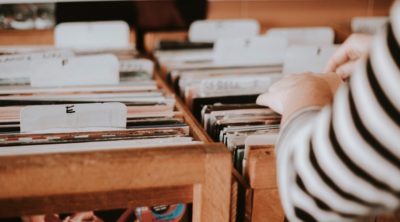
The violin is an instrument that is perhaps the most shrouded in mystery. With centuries old makes flying about auctions along with cheap replicas being sold as originals by unscrupulous traders, it becomes hard to choose the right one for yourself. Especially in the used violin market, where there’s a wide scope for scams to happen left, right and center…
There are so many types of violins you can buy today; you get the originals from as early as the 1600s to machine-made outfits for beginners. You get official hand-made replicas of the great Stradivarius violin to even knock-offs of these replicas! A skilled luthier will always be able to figure out the real from the fake, sometimes with even just photographs. But as a new, inexperienced buyer, you may be suckered by someone into buying a violin for thousands of dollars when it actually is worth about a few hundred. To avoid such instances, there are certain things that you can look for, to figure out if you’re being conned or not.
A Novice Buyer’s Guide to Used Violins
To keep things simple, I’ve divided the guide into sections depending on who is buying and where he/she is buying from.
Age and Seriousness of the Buyer
I am assuming that my readers belong within the ‘new-to-this’ to ‘moderately-experienced’ violin enthusiasts. Advanced players and collectors almost always have their own system of choosing a violin.
If you’re someone completely new to the violin, then buying one firstly depends on your age. It’s obvious that a 7-year-old will have a hard time playing an adult-sized violin. So here’s a list of the available sizes and the age they correspond to.
- For a child of 3 years (or younger), the size is 1/32 (13 inches in length).
- For a child of 3-4 years old, the size is 1/16 (14 inches in length).
- For a child of 4-5 years old, the size is 1/10 (15 inches in length).
- For a child of 5-6 years old, the size is 1/8 (16 1/2 inches in length).
- For a child of 6-8 years old, the size is 1/4 (18 1/2 inches in length).
- For a child of 8-10 years old, the size is 1/2 (20 inches in length).
- For a child of 10-12 years old, the size is 3/4 (22 inches in length).
- From 12 onwards, you can play the full-size violin, which is 4/4 (23 inches in length).
With this in mind, here’s a simple trick you can use to save a little money on the beginner level after 12 years of age. When you (or your child) start out, buy a low-priced outfit. As your skills develop, you will realize whether you want to pursue playing or not. If you do, spend a little to upgrade the bow and the strings. After that, see if you can find someone to help upgrade the setup. If you’ve bought the violin from a specialty store, they can do this for a price. This will help in developing a better sound on a cheap violin for low costs. All of this should be done only if you have problems buying a better violin (a moderate quality violin will cost no less than $250, used ones for no less than $100-$150).
The musician on an intermediate level of difficulty can sense if a violin is uncomfortable to play. In such cases, find a better make or see what you can do to change the feel to your liking.
Buying Online
Now that we’re clear on who’s buying, let’s have a look at all the places you can buy a used violin from. The first place that comes to mind to most buyers will be the Internet. Sites like eBay always have sellers that put their own used outfits for sale. The prices can be as low as $25–$50. There are even shops that sell online at discounted prices and sometimes offer free shipping. Now, since we’re talking about used violins, I suggest that you not buy yours online. More often than not, people end up regretting taking this choice.
This is because even though the Internet may offer the widest range of instruments, the seller’s credibility is always low. You never know who the seller can be. As far as shops are concerned, only a small number will ever offer a trial period for online purchase. Trust a shop only if they do provide this service. When the violin arrives, it is advisable to let an experienced player handle it before playing it yourself. He can help ascertain the instrument’s quality and you can try it for comfort. Also check if the seller is willing to accept returns or trade the rejected violin for another of the same price (or higher).
Another problem with online purchase is if the violin has been made overseas. There’s no telling what might happen to the wood when the instrument is stored in a climate different from the place it was created. In this case, you have to spend extra to take care of your violin.
Buying From a Local Source
If you’re buying from a shop, the best thing you can do is to take some who knows about violins, with you (like your teacher or a professional violinist friend). If the store owner realizes that you have little or no idea of what to look for, he may try to sell you a really expensive outfit that you don’t really need, or overcharge for a cheaper one. This is always the case with used violins, it’s rather difficult for a novice (or even an intermediate player) to find any faults. Never buy one just because it’s the shiniest or because the seller is throwing some free stuff in.
You will come across traders that offer a trade-back policy with the violins they sell. You can buy a violin from them (both used and new) and return it at a later day. Find out the average return cost percentage that other traders offer. If the one you’re buying from is offering too low a return price, chances are the violin is faulty or of an inferior make.
Checking a Used Violin for Kinks
Here’s a list of things that you can look for when you’re looking a used violin.
- The first thing you look for are cracks in the wood. A single, small crack can not only change the sound of a violin, but the crack will also get bigger with time, potentially ruining the instrument. Even repaired cracks or ones that have been polished over can be detrimental to the violin’s quality. This goes double for cracks on the back than any other place, because they are the worst.
- Low quality wood means it’s not cured well. As time passes, a violin made out of this wood will start swelling in the side, or the ribs. This is because the wood eventually shrinks, but only the parts where there are long continuances. Which means the sides (the ribs) stay relatively firm, while the top and back plates (front and back side) of the violin begin to shrink. This gives the violin a bloated look. As a rule of thumb, make sure the sides have not swollen more than the outer edges.
- Never buy a piece if it wasn’t already arranged with tuned strings. Violins, like any instrument, need some warming up. A good craftsman will know how to keep a violin in playable condition, rather than keep it boxed up.
- Make sure the neck is perfectly straight.
- Check the setup. The strings should be at the right height, so when you play, the strings won’t touch the fingerboard too much and make a buzzing sound. The bridge should be perfectly straight and at right angles to the front plate.
- Look at how the fine tuners have been set. Too loose is bad, too tight is even worse, as they might dig into the wood beneath them.
- The pegs should be made of either rosewood or ebony. Any other wood is just not dense enough to get a proper grip without letting the strings slip.
It also pays to take some time to learn about all the parts of a violin. Once you learn what things like ‘sound post’, ‘bass-bar’ and ‘tailpiece’ are and what they do inside a violin, it automatically becomes easier for you to see if they are set right or not. If they are not, check if it requires only a minor adjustment; in any other case look for another outfit.
Average Prices for Used Violins
The thing about violins is, judging them based purely on sound is not possible. That’s because sound is always subjective. So the appraisal is often based on other things like when and where they were made, who made them and whether the violin has undergone any repairs to date.
Simply put, expensive means better. The kind of wood used, even in machine-made violins, can be quite costly. Add to that a luthier’s work in case of a hand-made violin, and the price goes up by a lot. It usually takes at least 200-250 hours of hard work to produce a quality instrument and so the price is justified. If the work put in is real and credible, that is. That said, a used violin for a beginner should cost around (and more than) $200. Look at it this way, the cheaper an instrument you try to buy, the more you’re going to spend on repairs, upgrades and maintenance later on. So it is definitely advisable to go for a better quality and expensive violin; you save more in the long run. A good, quality used violin should cost at least $500.
As for authentic and old violins, it’s better to refer to good catalogs or an expert luthier that you can trust. These won’t cost any less than $4000, even the replicas.
All in all, a serious beginner should be willing to shell out about $400–$500 for a good, used violin. The price almost doubles for an intermediate player and double of that for an advanced player.
In the end, for any player, what matters is the sound of a violin and its ability to hold that sound for a long time. Buying an expensive instrument with quality wood almost always ensures good sound, but you can find a violin that suits your musical needs and still be priced within budget. The amazing thing about a used violin is that if the wood is in good condition, the varnish hardens over time, giving a better, resonant tone. Not only that, old violins always generate a good status and respect within musical circles. It all stems from the violin’s amazing history and buying one makes you a part of it.


